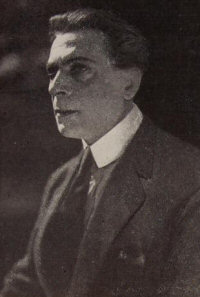Greek orthography
| ||||||||||||||||||||||||||||||||||||||||||||||||||||||||||||||||||||||||||||||||||||||||||||||||||||||
Read other articles:

Moral behaviours of man-made machines Machine ethics (or machine morality, computational morality, or computational ethics) is a part of the ethics of artificial intelligence concerned with adding or ensuring moral behaviors of man-made machines that use artificial intelligence, otherwise known as artificial intelligent agents.[1] Machine ethics differs from other ethical fields related to engineering and technology. It should not be confused with computer ethics, which focuses on human …

Ford F-650/F-750 Super DutyFord F-650 SuperCab in use as a flatbed tow truckInformasiProdusenBlue Diamond Truck Company LLC - Ford Motor Company/Navistar InternationalMasa produksi2000-sekarangPerakitanGeneral Escobedo, Mexico (2000-2013)Avon Lake, Ohio (2014-sekarang)Bodi & rangkaKelastruk kelas menengah dan kelas berat (Class 6,7,8)Bentuk kerangkaRegular Cab, SuperCab dan CrewCab, Pro Loader Kick-up Frame atau Pro Loader Straight FrameMobil terkaitInternational 4000-Series/DuraStarInt…

Азиатский барсук Научная классификация Домен:ЭукариотыЦарство:ЖивотныеПодцарство:ЭуметазоиБез ранга:Двусторонне-симметричныеБез ранга:ВторичноротыеТип:ХордовыеПодтип:ПозвоночныеИнфратип:ЧелюстноротыеНадкласс:ЧетвероногиеКлада:АмниотыКлада:СинапсидыКласс:Млеко�…

American politician Robert T. Anderson41st Lieutenant Governor of IowaIn officeJanuary 14, 1983 – January 1987GovernorTerry BranstadPreceded byTerry BranstadSucceeded byJo Ann Zimmerman Personal detailsBorn (1945-03-08) March 8, 1945 (age 79)Marshalltown, Iowa, U.S.Political partyDemocraticProfessionTeacher Robert T. Anderson (born March 8, 1945)[1] is an American politician who was the Lieutenant Governor of Iowa from 1983 to 1987. A Democrat, he was the last male to be …

Painting by Thomas Eakins ArcadiaArtistThomas EakinsYearc.1883MediumOil on canvasDimensions38 5/8 x 45 in (98.1 x 114.3 cm)LocationMetropolitan Museum of Art, New YorkWebsiteThe Met Arcadia is a c.1883 painting by Thomas Eakins, Goodrich #196. It is part of the collection of the Metropolitan Museum of Art, in New York.[1] History G-190. The Swimming Hole (1884-85), Amon Carter Museum. In the early 1880s, Eakins, instructor in painting at the Pennsylvania Academy of the Fine Arts, began t…

الإمام ابن البارزي معلومات شخصية اسم الولادة هبة الله بن عبد الرحيم بن إبراهيم بن البارزي الجهني الحموي الميلاد 2 يناير 1248 [1] حماة[2] الوفاة 3 يونيو 1338 (90 سنة) [1] حماة مشكلة صحية عمى الحياة العملية المهنة قاضي شرعي، وفقيه اللغة الأم العربية…

2004 United States House of Representatives elections in Washington ← 2002 November 2, 2004 (2004-11-02) 2006 → All 9 Washington seats to the United States House of Representatives Majority party Minority party Party Democratic Republican Last election 6 3 Seats won 6 3 Seat change Popular vote 1,725,316 1,189,147 Percentage 58.93% 40.13% Swing 6.75% 4.66% Democratic 60–70% 80–90% Republican …

Yang di-Pertuan Agong from 1979 to 1984 Ahmad Shah أحمد شاهAl-Musta'in Billah (He who seeks help from God) Yang di-Pertuan Agong VIIYang di-Pertuan AgongReign26 April 1979 – 25 April 1984Installation10 July 1980PredecessorYahya PetraSuccessorIskandarSultan of PahangReign7 May 1974 – 11 January 2019Installation8 May 1975PredecessorAbu BakarSuccessorAbdullah8th President of AFC In office1 August 1994 – 1 August 2002Preceded byHamzah Abu SamahSucceeded byMohammed bin Hammam Bo…

Japanese high speed train type E3 seriesReliveried E3-1000 series set L53 on a Tsubasa service, June 2022In service22 March 1997; 27 years ago (1997-03-22) – presentManufacturerKawasaki Heavy Industries, Tokyu Car CorporationFamily nameMini-shinkansenReplaced400 seriesConstructed1995–2009Scrapped2013–Number built261 vehicles (41 sets)Number in service84 vehicles (12 sets) (as of March 2024[update])Number scrapped163 vehiclesSuccessorE6 series, E8 seri…

Defunct car manufacturer For other uses, see Studebaker (disambiguation). Studebaker CorporationBadge used in the 1950s and 1960sFormerlyStudebaker Brothers Manufacturing CompanyIndustryAutomotive, manufacturingFoundedFebruary 1852; 172 years ago (1852-02)Founders Henry Studebaker Clement Studebaker John Studebaker Peter Studebaker Jacob Studebaker DefunctNovember 1967; 56 years ago (1967-11)FateMerged with Packard to form the Studebaker-Packard Corp…

Zone within FIBA (International Basketball Federation) FIBA AmericasFormation11 October 1975TypeSports federationHeadquartersMiami, FloridaMembership 42 national associationsOfficial language English and SpanishPresidentCarol CallanWebsitefiba.basketball/americas FIBA Americas (Spanish: Confederación Panamericana de Baloncesto, French: FIBA Amériques) is a zone within FIBA (International Basketball Federation). It is one of FIBA's five continental confederations. FIBA Americas is responsible f…

Questa voce sull'argomento centri abitati del Warwickshire è solo un abbozzo. Contribuisci a migliorarla secondo le convenzioni di Wikipedia. Rugbyparrocchia civileRugby – Veduta LocalizzazioneStato Regno Unito Inghilterra RegioneMidlands Occidentali Contea Warwickshire DistrettoRugby TerritorioCoordinate52°22′N 1°15′W52°22′N, 1°15′W (Rugby) Abitanti70 628 (2011) Altre informazioniCod. postaleCV21, CV22, CV23 Prefisso01788 Fuso orar…

British-Canadian actress (born 1956) Kim CattrallCattrall in 2024BornKim Victoria Cattrall (1956-08-21) 21 August 1956 (age 67)Liverpool, EnglandCitizenship Canada United Kingdom United States Education London Academy of Music and Dramatic Art American Academy of Dramatic Arts OccupationsActressproducerYears active1975–presentSpouses Larry Davis (m. 1977; ann. 1979) Andre J. Lyson (m. 1982; div.&#…

Lihat entri libertas di kamus bebas Wiktionary. Patung LibertyLetakPulau LibertyManhattan, Kota New York,New York,[1] Amerika SerikatKetinggian Dari dasar patung hingga puncak: 151 kaki 1 inci (46 meter) Dari tanah hingga puncak: 305 kaki 1 inci (93 meter) Diresmikan28 Oktober 1886Dipugar1938, 1984–1986, 2011–2012PemahatFrédéric Auguste BartholdiPengunjung3,2 juta (tahun 2009)[2]Badan pengelolaNational Park Service Situs Warisan Dunia UNESCOJenisKul…

Amleto NovelliLahir(1885-10-18)18 Oktober 1885Bologna, ItaliaMeninggal16 April 1924(1924-04-16) (umur 38)Torino, ItaliaPekerjaanPemeranTahun aktif1909-1924 Amleto Novelli (18 Oktober 1885 – 16 April 1924) adalah seorang pemeran film Italia pada era film bisu.[1] Ia tampil dalam 110 film antara 1909 dan 1924. Filmografi pilihan Brutus (1911) Agrippina (1911) Quo Vadis (1913) Antony and Cleopatra (1913) Julius Caesar (1914) The Wedding March (1915) Avatar (1916) M…

Major character on the TV show Seinfeld Fictional character NewmanWayne Knight as Newman in The Calzone (1996)First appearanceThe Revenge (voice only) (1991) The Suicide (on-screen appearance) (1992)Last appearanceA Message from Your Friendly Local Mail Carrier (2020)[1]Created byJerry Seinfeld and Larry DavidPortrayed byWayne KnightVoiced byLarry David (The Revenge, original broadcast)In-universe informationGenderMaleOccupationMail carrier Newman is a recurring character in the televisi…

Flying squadron of the Royal Air Force No. 57 Squadron RAFSquadron badgeActive8 June 1916 – 1 April 1918 (RFC) 1 April 1918 – 31 December 1919 (RAF) 20 October 1931 – 25 November 1945 26 November 1945 – 9 December 1957 1 January 1959 – 30 June 1986 1 July 1992 – 14 March 2002 1 October 2008 – presentCountry United KingdomBranch Royal Air ForceTypeFlying squadronRoleElementary Flying TrainingPart ofNo. 3 Flying Training SchoolHome stationRAF CranwellMotto(s)Corpus non animum mu…

Piala FA 1873–1874Negara InggrisTanggal penyelenggaraan9 Oktober 1873 – 14 Maret 1874Jumlah peserta28Juara bertahanWanderersJuaraOxford University(gelar ke-1)Tempat keduaRoyal EngineersJumlah pertandingan26Jumlah gol58 (2.23 per pertandingan)← 1872–1873 1874–1875 → Piala Challenge The Football Association 1873–1874 adalah edisi ketiga dari penyelenggaraan Piala FA, turnamen tertua dalam sepak bola di Inggris. Dua puluh delapan tim mengikuti turnamen ini, di mana dua belas tim …

Grant ImaharaImahara in 2013.LahirGrant Masaru Imahara(1970-10-23)23 Oktober 1970Los Angeles, California, ASMeninggal13 Juli 2020(2020-07-13) (umur 49)Sebab meninggalAneurisma otakAlmamaterUniversity of Southern CaliforniaPekerjaaninsinyur kelistrikanrobotikapemandu acara televisi Grant Masaru Imahara (23 Oktober 1970 - 13 Juli 2020) adalah seorang insinyur kelistrikan, robotika dan pemandu acara televisii Amerika. Ia dikenal atas karyanya pada serial televisi MythBusters. Pranala luar…

此條目已列出參考資料,但文內引註不足,部分內容的來源仍然不明。 (2018年8月31日)请加上合适的文內引註加以改善。 美国政府機構国家海洋和大气管理局National Oceanic and Atmospheric Administration徽章旗帜機構概要成立時間1807年2月10日,217年前(1807-02-10)[1]重建:1970年10月3日,53年前(1970-10-03)前身機構美国海岸调查局(United States Survey of the Co…